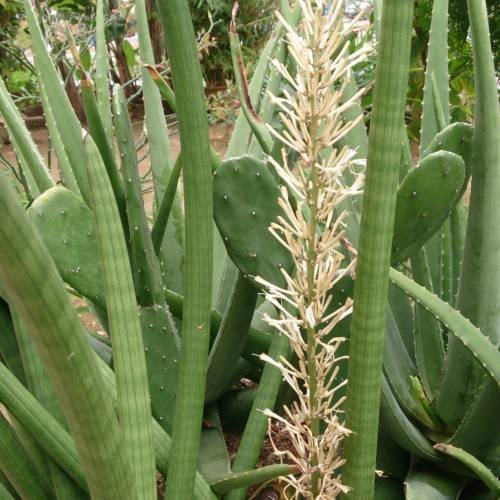
bowstring hemp
Sansevieria cylindrica
Cycle:
Herbaceous Perennial
Watering:
Minimum
Hardiness Zone:
10 - 11
Flowers:
Flowers
Sun:
part shade,part sun/part shade
Leaf:
Yes
Growth Rate:
Low
Maintenance:
Low
Drought Tolerant:
Yes
Salt Tolerant:
Yes
Indoors:
Yes
Care Level:
Low
watering
Bowstring hemp is a drought-tolerant plant, and only needs to be watered about once per month in the summer. During the winter, it can be watered as little as once every 6-8 weeks. When watering, it is important to thoroughly soak the soil and allow it to dry out between waterings. Over-watering can cause root rot and other problems, so make sure not to saturate it too frequently.
sunlight
Bowstring hemp (Sansevieria cylindrica) does best with bright, indirect sunlight. It should receive at least 4 hours of bright light per day, ideally during the morning and/or evening when the sun is not at its peak intensity. Bright, direct light can damage this plant's leaves, so be sure to keep it away from intense midday sun.
pruning
The best time for pruning a bowstring hemp (Sansevieria cylindrica) is once per month towards the end of summer. To ensure healthy regrowth, it is important to not cut off more than 1-third of the total height of the plant. For instance, if the plant is 20 cm tall, you should only cut off 6-7 cm of the leaves. It is also important to ensure that the cut is done above the nodes or growth points on the leaves for encouraging better regrowth.
